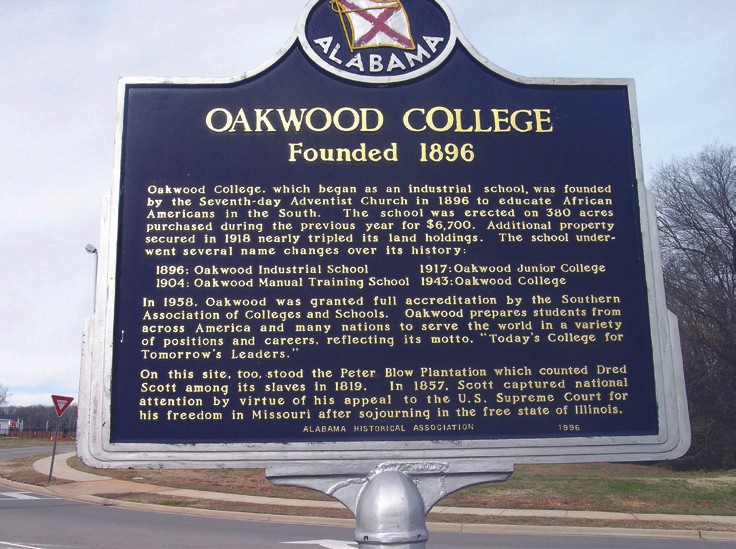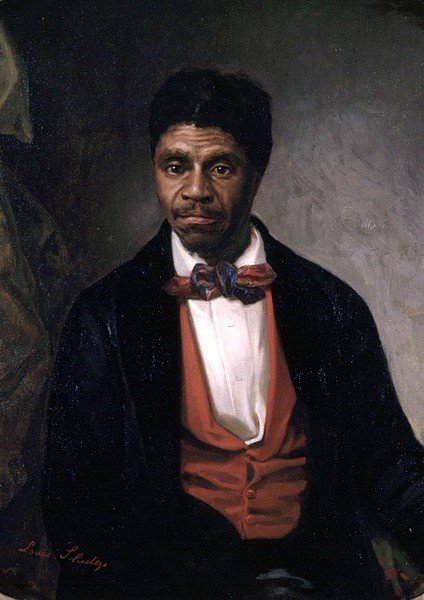Oakwood College Historical Marker and Dred Scott
Introduction
Text-to-speech Audio
Images
A historical marker on the campus of Oakwood College marks the former site of the Peter Blow Plantation and the home of famous slave Dred Scott.

The Supreme Court ruled, 7-2, that Dred Scott, a slave, could not be free or be a United States citizen.

Backstory and Context
Text-to-speech Audio
Dred Scott was born in Southampton, Virginia and was known as “Sam” as a youngster. He later changed his name to Dred Scott. Peter Blow purchased Scott who lived here on Blow's plantation as well as Florence, Alabama. In 1832, the Blow family sold Scott to John Emerson, a surgeon in the U.S. Army and moved to Illinois and later Wisconsin. When Emerson died, his widow, Irene Emerson, refused to give Scott his freedom. With the help of his wife Harriet and abolitionists, Scott sued for his freedom. While Peter and Elizabeth Blow had passsed away, the Scotts were assisted by Taylor and Henry Blow, the sons of Dred Scott's former owners. He was also assisted by Black clergy and other influential Black leaders.
After working its way up through the court system and appeal process, new attorneys helped Scott get to the Supreme Court filing against Irene Emerson’s brother, who was the executor of the estate. The Supreme Court ruled 7-2 against Scott and this helped set the stage for the Civil War.
The U.S. Supreme Court ruled against Dred Scott and said that no people of African descent, free or slave, could sue in the courts of the United States. The decision galvanized public opinion and demonstrated the connection between slavery and race as it denied the rights of citizenship to people of color in the United States regardless of their legal status. Scott was emancipated in 1857 thanks in part to the actions of Taylor Blow. Scott died on September 17, 1858, and Taylor Blow purchased a cemetery lot in St. Louis where his body was laid to rest.
Oakwood College includes several small plaques denoting the location of slave cabins and a cemetery where enslaved persons were buried decades prior to the establishment of the university in 1896. This historical marker which offers a history of the college also mentions the significance of the history of this land as a former plantation where Dred Scott lived as an enslaved laborer for a family that later helped secure his freedom.
Cite This Entry
Chapman, Robyn and Clio Admin. "Oakwood College Historical Marker and Dred Scott." Clio: Your Guide to History. May 20, 2019. Accessed February 15, 2025. https://theclio.com/entry/23372

